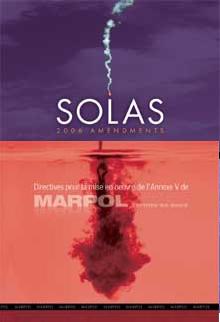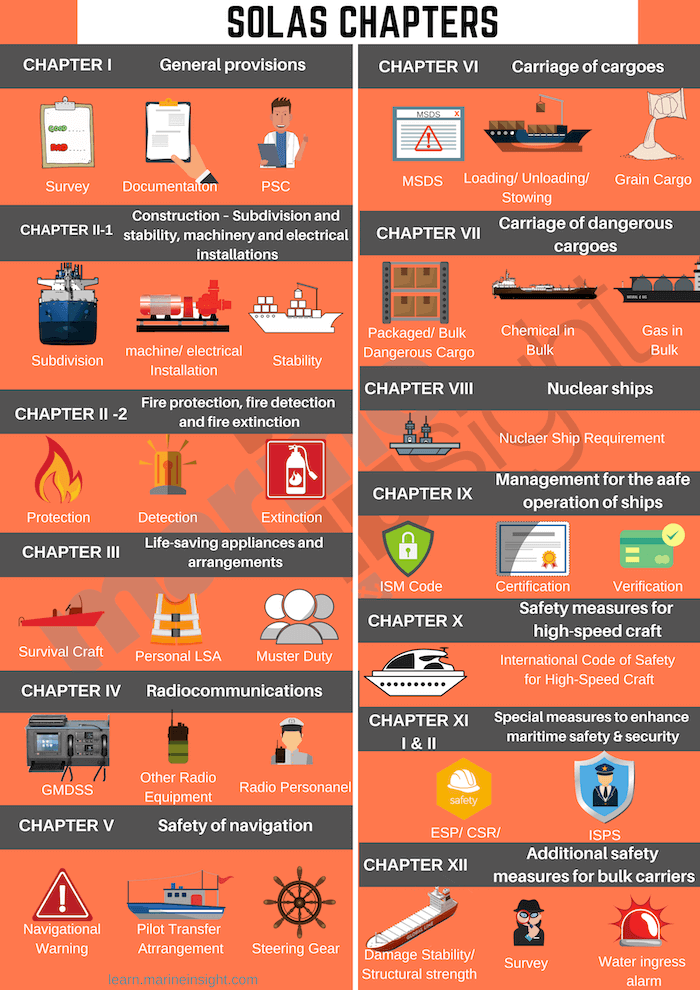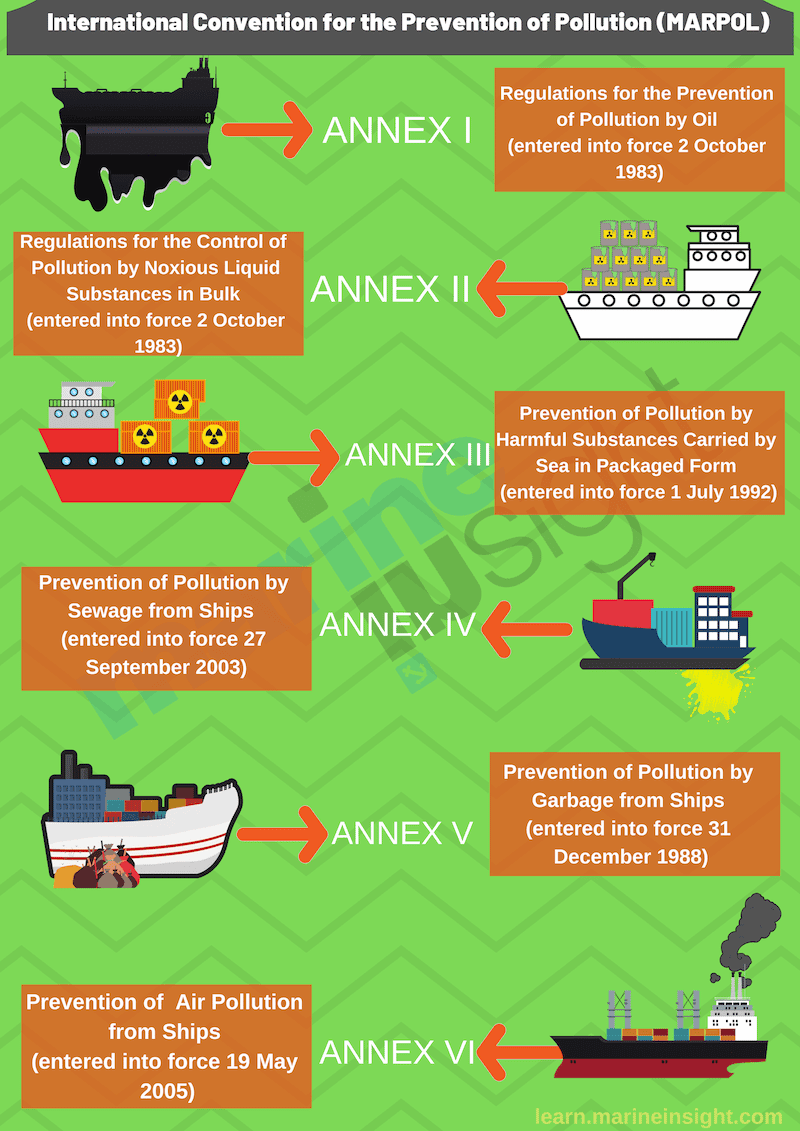WHAT IS SOLAS CONVENTION?
The word SOLAS is an abbreviation and SOLAS full form is “Safety Of Life At Sea”, an international maritime treaty, also known as SOLAS Convention or International Convention for the Safety of Life at Sea (SOLAS), which establishes the least safety measures in the construction, equipment and operation of merchant ships.
IMO SOLAS 74, the last adopted revised convention of 1974, includes a number of regulations under different SOLAS chapters, which deals with safety precautions and safety procedures starting from the construction of the ship to real emergency like – “Abandon Ship”. The convention is updated to meet the safety norms in the modern shipping industry from time to time.
This article explains the contents of SOLAS chapters and regulations providing a summary of SOLAS, i.e. different chapters of SOLAS and the regulations they carry. Marine Insight has provided links of various articles which will help the readers to understand how the regulation of the SOLAS Annexes is implemented on a seagoing vessel and the importance of SOLAS.
SOLAS 74
SOLAS CONTENT:
The SOLAS 1974 international maritime treaty comprises of 13 chapters and each chapter has its own set of regulations. The Following are the list of SOLAS all 14 chapters and the regulations they contain:

The International Convention for the Safety of Life at Sea (SOLAS), 1974 describes the requirement for all merchant ship of any flag state to comply with the minimum safety norms laid down in the chapters which are as follows:
Chapter I – General Provisions: Surveys and certification of all the safety items etc are included.
Chapter II-1 – Construction – Subdivision and stability, machinery and electrical installations: Deals with watertight integrity of the ship, especially for passenger vessel.
Chapter II-2 – Fire protection, fire detection and fire extinction: This chapter elaborates the means and measure for fire protection in accommodation, cargo spaces and engine room for the passenger, cargo and tanker ship.
Chapter III – Life-saving appliances and arrangements: All the life-saving appliances and there use in different situations is described.
Chapter IV – Radio communications: Includes requirements of GMDSS, SART, EPIRB etc for cargo and passenger vessel.
Chapter V – Safety of navigation: This chapter deals with all the seagoing vessels of all sizes, from boats to VLCCs, and includes passage planning, navigation, distress signal etc.
Chapter VI – Carriage of Cargoes: This chapter defines storage and securing of different types of cargo and containers, but does not include oil and gas cargo.
Chapter VII – Carriage of dangerous goods: Defines the International Maritime Goods Code for storage and transportation of dangerous goods.
Chapter VIII – Nuclear ships: The code of safety for a nuclear-propelled ship is stated in this chapter.
Chapter IX – Management for the Safe Operation of Ships: The International Safety Management code for ship owner and the operator is described clearly.
Chapter X – Safety measures for high-speed craft: safety code for the high-speed craft is explained.
Chapter XI-1 & 2– Special measures to enhance maritime safety: Special and enhanced survey for safe operation, other operational requirements and ISPS code is briefed in this chapter.
Chapter XII – Additional safety measures for bulk carriers: Includes safety requirement for above 150 meters length bulk carrier.
Chapter XIII – Verification of Compliance
Chapter XIV -Safety Measures for Ships Operating in Polar Waters

MARPOL
International Convention for the Prevention of Pollution from Ships (MARPOL)
Adoption: 1973 (Convention), 1978 (1978 Protocol), 1997 (Protocol - Annex VI); Entry into force: 2 October 1983 (Annexes I and II).
The International Convention for the Prevention of Pollution from Ships (MARPOL) is the main international convention covering prevention of pollution of the marine environment by ships from operational or accidental causes.
The MARPOL Convention was adopted on 2 November 1973 at IMO. The Protocol of 1978 was adopted in response to a spate of tanker accidents in 1976-1977. As the 1973 MARPOL Convention had not yet entered into force, the 1978 MARPOL Protocol absorbed the parent Convention. The combined instrument entered into force on 2 October 1983. In 1997, a Protocol was adopted to amend the Convention and a new Annex VI was added which entered into force on 19 May 2005. MARPOL has been updated by amendments through the years.
The Convention includes regulations aimed at preventing and minimizing pollution from ships - both accidental pollution and that from routine operations - and currently includes six technical Annexes. Special Areas with strict controls on operational discharges are included in most Annexes.
Annex I Regulations for the Prevention of Pollution by Oil (entered into force 2 October 1983)
Covers prevention of pollution by oil from operational measures as well as from accidental discharges; the 1992 amendments to Annex I made it mandatory for new oil tankers to have double hulls and brought in a phase-in schedule for existing tankers to fit double hulls, which was subsequently revised in 2001 and 2003.
Annex II Regulations for the Control of Pollution by Noxious Liquid Substances in Bulk (entered into force 2 October 1983)
Details the discharge criteria and measures for the control of pollution by noxious liquid substances carried in bulk; some 250 substances were evaluated and included in the list appended to the Convention; the discharge of their residues is allowed only to reception facilities until certain concentrations and conditions (which vary with the category of substances) are complied with.
In any case, no discharge of residues containing noxious substances is permitted within 12 miles of the nearest land.
Annex III Prevention of Pollution by Harmful Substances Carried by Sea in Packaged Form (entered into force 1 July 1992)
Contains general requirements for the issuing of detailed standards on packing, marking, labelling, documentation, stowage, quantity limitations, exceptions and notifications.
For the purpose of this Annex, “harmful substances” are those substances which are identified as marine pollutants in the International Maritime Dangerous Goods Code (IMDG Code) or which meet the criteria in the Appendix of Annex III.
Annex IV Prevention of Pollution by Sewage from Ships (entered into force 27 September 2003)
Contains requirements to control pollution of the sea by sewage; the discharge of sewage into the sea is prohibited, except when the ship has in operation an approved sewage treatment plant or when the ship is discharging comminuted and disinfected sewage using an approved system at a distance of more than three nautical miles from the nearest land; sewage which is not comminuted or disinfected has to be discharged at a distance of more than 12 nautical miles from the nearest land.
Annex V Prevention of Pollution by Garbage from Ships (entered into force 31 December 1988)
Deals with different types of garbage and specifies the distances from land and the manner in which they may be disposed of; the most important feature of the Annex is the complete ban imposed on the disposal into the sea of all forms of plastics.
Annex VI Prevention of Air Pollution from Ships (entered into force 19 May 2005)
Sets limits on sulphur oxide and nitrogen oxide emissions from ship exhausts and prohibits deliberate emissions of ozone depleting substances; designated emission control areas set more stringent standards for SOx, NOx and particulate matter. A chapter adopted in 2011 covers mandatory technical and operational energy efficiency measures aimed at reducing greenhouse gas emissions from ships.

SOURCE : GOOGLE
STCW CONVENTION |
International Convention on Standards of Training, Certification and Watchkeeping for Seafarers (STCW), 1978 sets minimum qualification standards for masters, officers and watch personnel on seagoing merchant ships and large yachts. STCW was adopted in 1978 by conference at the International Maritime Organization (IMO) in London, and entered into force in 1984. The Convention was significantly amended in 1995.
The 1978 STCW Convention was the first to establish minimum basic requirements on training, certification and watchkeeping for seafarers on an international level. Previously the minimum standards of training, certification and watchkeeping of officers and ratings were established by individual governments, usually without reference to practices in other countries. As a result, minimum standards and procedures varied widely, even though shipping is extremely international by nature.
The Convention prescribes minimum standards relating to training, certification and watchkeeping for seafarers which countries are obliged to meet or exceed.[3]
The Convention did not deal with manning levels: IMO provisions in this area are covered by regulation 14 of Chapter V of the International Convention for the Safety of Life at Sea (SOLAS), 1974, whose requirements are backed up by resolution A.890(21) Principles of safe manning[4], adopted by the IMO Assembly in 1999, which replaced an earlier resolution A.481(XII)[5] adopted in 1981 and has since been itself replaced by resolution A.1047(27) Principles of Minimum Safe Manning[6], adopted by the IMO Assembly in 2011.
One especially important feature of the Convention is that it applies to ships of non-party States when visiting ports of States which are Parties to the Convention. Article X requires Parties to apply the control measures to ships of all flags to the extent necessary to ensure that no more favourable treatment is given to ships entitled to fly the flag of a State which is not a Party than is given to ships entitled to fly the flag of a State that is a Party.
The difficulties which could arise for ships of States which are not Parties to the Convention is one reason why the Convention has received such wide acceptance. By 2018, the STCW Convention had 164 Parties, representing 99.2 per cent of world shipping tonnage.
|
Manila Amendments
The IMO Convention on Standards of Training Certification and Watchkeeping of Seafarers adopted a new set of amendments in Manila in 2010 called "The Manila Amendments". These amendments were necessary to keep training standards in line with new technological and operational requirements that require new shipboard competencies. The Manila Amendments were effective as of 1 January 2012. There is a transition period until 2017 when all seafarers must be certified and trained according to the new standards. Implementation is progressive, every year a modified set of requirements comes into force. The most significant amendments are:
What is the Maritime Labour Convention (MLC)?
The Maritime Labour Convention 2006 (MLC) is an international agreement of the International Labour Organisation (‘ILO’) which sets out seafarers’ rights to decent conditions of work. It is sometimes called the ‘Seafarers’ Bill of Rights’. It applies to all seafarers, including those with jobs in hotel and other passenger services on cruise ships and commercial yachts,
In 2013 the MLC became binding law for 30 countries.
As of January 2019, a total of 90 countries had ratified the MLC 2006, which has resulted in more than 91% of the world’s shipping fleet being regulated. For detailed information please visit the ILO website.
More than 100 pages long, the MLC 2006 sets minimum requirements for nearly every aspect of working and living conditions for seafarers including recruitment and placement practices, conditions of employment, hours of work and rest, repatriation, annual leave, payment of wages, accommodation, recreational facilities, food and catering, health protection, occupational safety and health, medical care, onshore welfare services and social protection.
LATEST UPDATES
A second set of amendments to the Maritime Labour Convention (MLC) for improving crew safety and welfare came into force on 8 January 2019.
Bullying and harassment, including sexual harassment, is an abuse of human rights and living on a ship offers limited alternatives to avoid it. Although these changes are non-mandatory, flag states must give due consideration to implementing them.
A further amendment has been made to mandatory Standard A5.1.3, whereby flag states may extend the validity of a Maritime Labour Certificate (which is otherwise limited to a maximum period of validity of five years) by up to a further five months. This will apply where a ship has successfully completed an MLC renewal inspection, but a new certificate cannot immediately be issued and made available on board.
|
Comments
Post a Comment